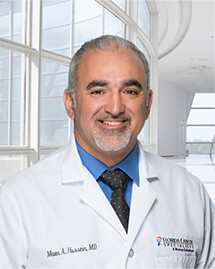Author Affiliations
1Struttura Organizzativa Dipartimentale di Clinica Ematologica, Azienda Ospedaliero Universitaria delle Marche, Università Politecnica delle Marche, Ancona, Italy; 2Unità di Ematologia, Ospedale Santa Maria delle Croci, Ravenna, Italy; 3Unità di Ematologia, Azienda Socio Sanitaria Territoriale Spedali Civili di Brescia, Brescia, Italy; 4Uffici Studi Fondazione Italiana Linfomi, sede di Modena, Modena, Italy; 5Unità Operativa Complessa di Ematologia, Ospedale dell’Angelo, Venice-Mestre, Italy; 6Clinica Ematologica, IRCCS Ospedale Policlinico San Martino, Università di Genova, Genoa, Italy; 7Ematologia, Azienda Unità Sanitaria Locale – IRCCS, Reggio Emilia, Italy; 8Unità di Ematologia e Trapianto di Cellule Staminali, Università Campus Bio-Medico, Rome, Italy; 9Divisione di Ematologia, Azienda Socio Sanitaria Territoriale Grande Ospedale Metropolitano Niguarda, Milan, Italy; 10Struttura Complessa di Oncoematologia e Autotrapianto, Azienda Ospedaliera Santa Maria, Università degli Studi di Perugia, Terni, Italy; 11Ematologia, Ospedale San Bortolo, Azienda Unità Sanitaria Locale Socio Sanitaria 8 “Berica,” Vicenza, Italy; 12Unità di Ematologia, Ospedale Guglielmo da Saliceto, Piacenza, Italy; 13Oncologia 1, Istituto Oncologico Veneto IRCCS, Padua, Italy; 14Ematologia, IRCCS Istituto Romagnolo per lo Studio dei Tumori, Meldola, Italy; 15Unità Operativa Complessa di Ematologia e Trapianto, Ospedale Pia Fondazione Cardinale Panico, Tricase, Italy; 16Unità di Ematologia, Azienda Ospedaliero Universitaria Senese, Siena, Italy; 17Dipartimento di Scienze Mediche e Chirurgiche Materno-Infantili e dell’Adulto, Università di Modena e Reggio Emilia, Centro Oncologico, Modena, Italy; 18Dipartimento di Oncoematologia, Ospedale Papardo, Messina, Italy; 19Unità Operativa di Ematologia e Centro Trapianti di Midollo Osseo, Azienda Ospedaliero Universitaria di Parma, Parma, Italy; 20Unità Operativa di Ematologia, Ospedale degli Infermi, Rimini, Italy; 21Dipartimento Chirurgico, Medico, Odontoiatrico e di Scienze Morfologiche con interesse Trapiantologico, Oncologico e di Medicina Rigenerativa, Università di Modena e Reggio Emilia, Reggio Emilia, Italy
